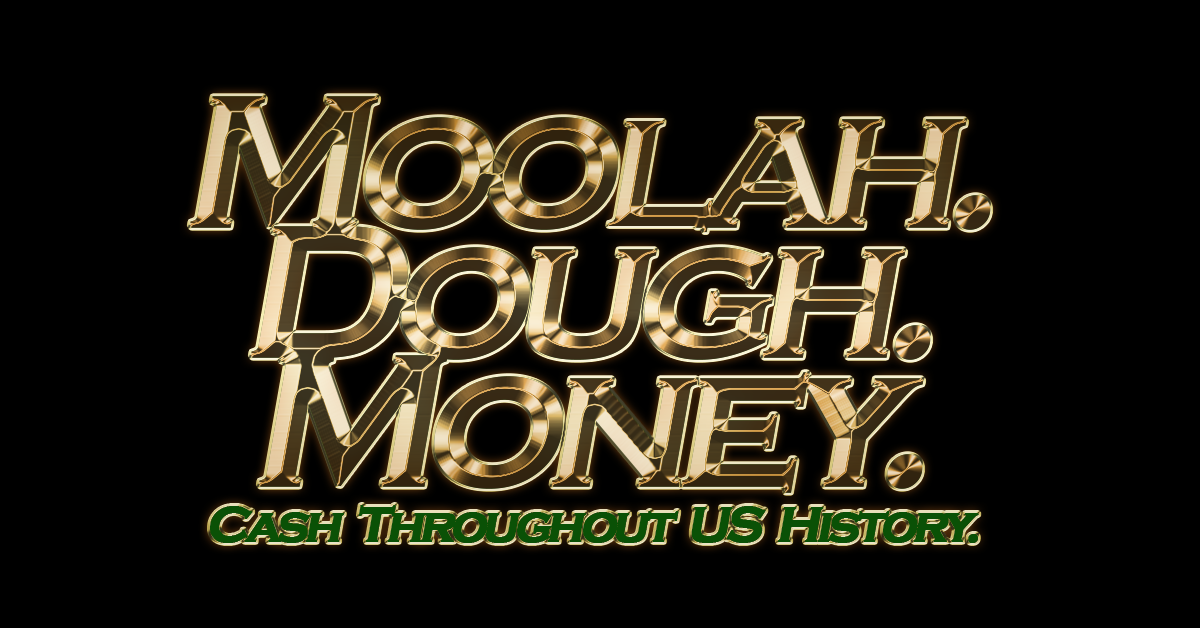Moolah. Dough. Money. Cash Throughout US History.

Moolah. Dough. Money. Cash Throughout US History.
Today, making a purchase can be as simple as inserting a plastic card or typing in a few numbers into your computer. Accounting for about 30% of all transactions, cash is still king however, when it comes to making purchases. Debit, credit and electronic transfers continue to grow but good old cash is still popular, especially when it comes to purchases under $10.
The history of cash in the world is a long one, going back to 2227 BC. The Babylonians are credited with creating the first guidelines for money, based on the weight of items as diverse as barley to gold. These were the first “sheckels”.
In the United States, the history of currency is actually slightly longer than the country itself. The first $2 notes, called “Continentals” were issued on June 25, 1776. These were actually “notes of credit” and the use of money in America was underway. Prior to the Revolution, a mix of French, Spanish and English currency was used.
The first official bank in the United States ws the Bank of North America, chartered in Philadelphia in 1781. It would be over a decade later when the United States Dollar was created as the unit for American cash in 1792. The first American coins were struck in 1793.
It was during the Civil War when the U.S. first issued paper money in the form of non-interest bearing Treasury Notes. These were called Demand Notes. United States Notes quickly replaced Demand Notes and because of their green tint, were nicknamed “greenbacks”. United States Notes remained part of U.S. currency until 1971.
In the second half of the 1800’s gold and silver certificates were issued and backed by precious metals. Gold certificates existed until the Great Depression in 1933 and silver certificates were backed by silver until 1957.
The Federal Reserve Act was created in 1913, with the issuance of Federal Reserve Notes to stabilize the economy. Today, these notes account for 99% of currency in circulation.
It wasn’t until 1957 that the words “In God We Trust” first appeared on paper currency. In 1994 paper currency began undergoing major design changes in the United States. Changes started with large denomination bills and by the year 2000, $5 and $10 bills were redesigned.
While fewer paper currency transactions may be taking place today, transactions in the United States are still based in “dollars”.
Save more of your hard-earned cash by getting a no cost, no obligation insurance review. Contact our independent insurance agents to see if they can improve your coverage, and perhaps even lower your premiums. Contact us today.
Do you have questions about your insurance? Find an insurance agent near you with our Agent Finder
Search All Blogs
Search All Blogs
Read More Blogs
The Unforgettable Eight: Women Who Captured Our Hearts
Meet the eight women who are loved by all.
Elevate Your Enterprise: 11 Smart Ways to Boost Business Professionalism
Boost your business’s professionalism without breaking the bank.
Lightening the Load: A Guide to Decluttering for Your Loved Ones
Declutter for peace of mind, yours and theirs.
Smart Car Buying: Beyond the Sticker Price
Unlock the hidden costs of car ownership.
6 Simple Steps to Supercharge Your Home Security
Simple, affordable ways to protect your home.
Beyond Boredom: Unearthing the Surprising Stories Behind Our Favorite Board Games
Game night secrets revealed! Discover the surprising origins and quirky facts behind your beloved board games.
Avoiding the Pitfalls: Common Mistakes of At-Home Businesses
Launch your home business right! Learn to avoid the common errors that can derail your entrepreneurial dreams.
Your Life Insurance Recipe: Crafting the Perfect Blend for Your Family’s Future
Find your perfect life insurance mix: Learn how to blend term and permanent policies for optimal family protection.
From Ford’s Innovation to Today’s Marvel: Unveiling the Secrets of Modern Car Production
Beyond the assembly line: Discover the surprising speed, customization, and quality checks involved in modern car manufacturing.
Beyond Pizza and Promises: Recognizing When It’s Time to Hire Professional Movers
Time to call the pros? Learn when pizza and beer just won’t cut it for your next move.









